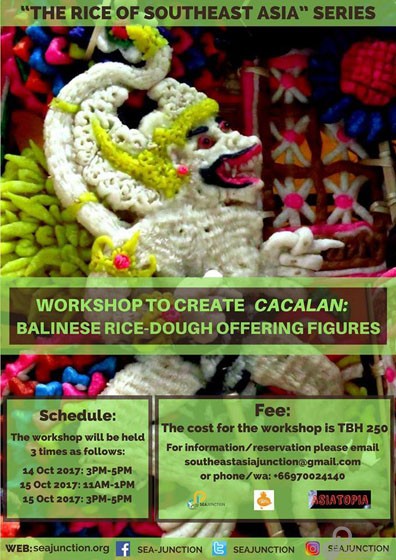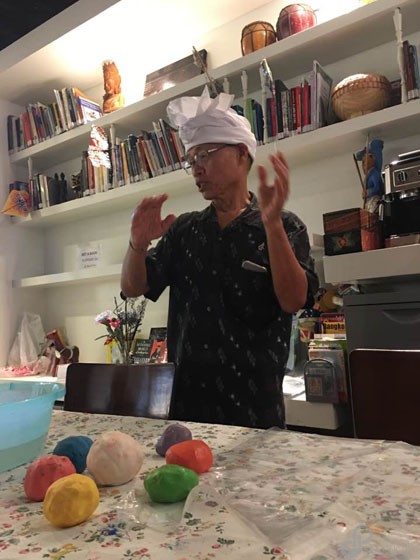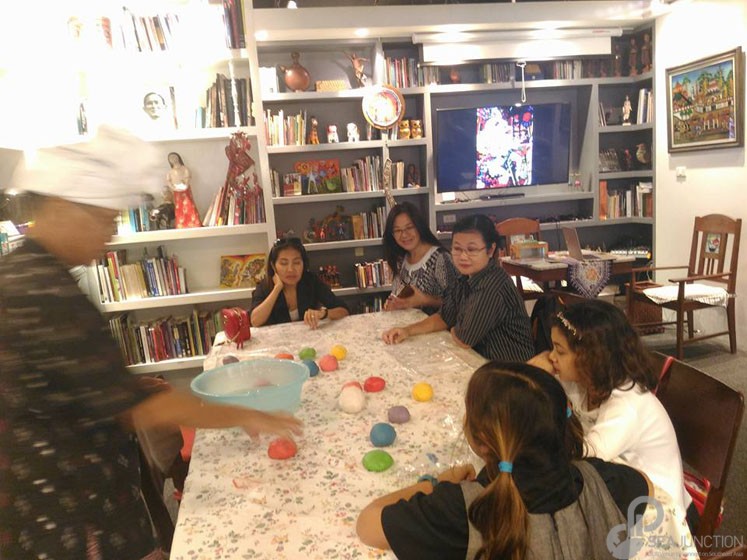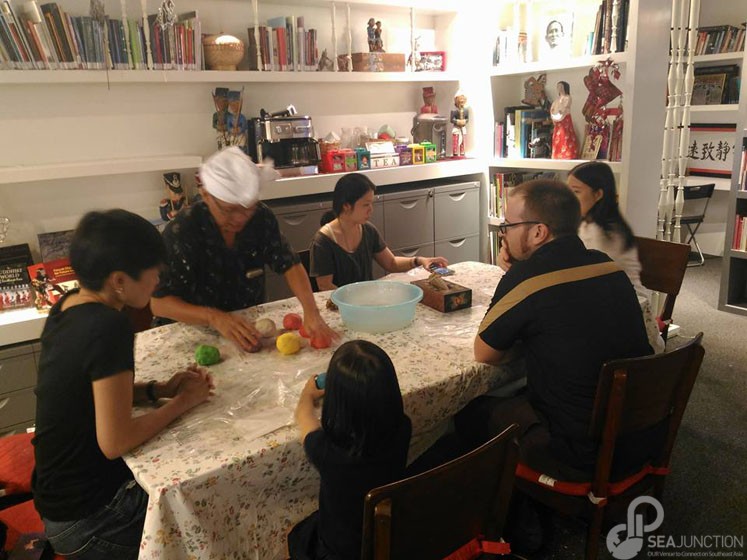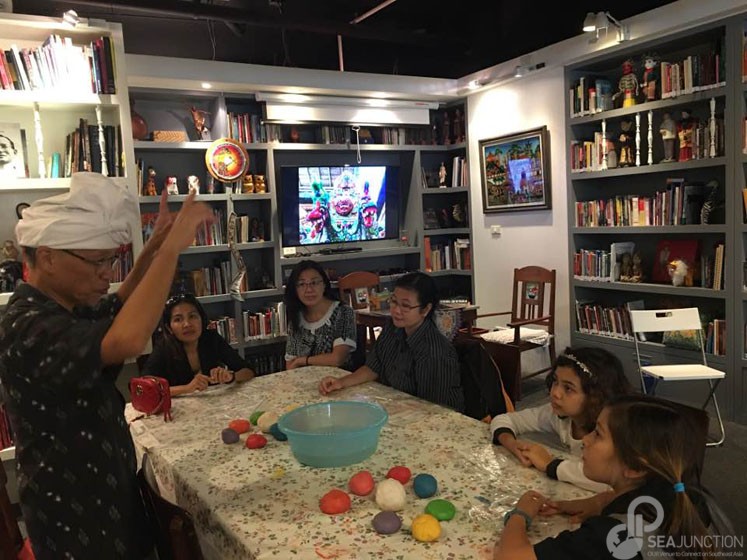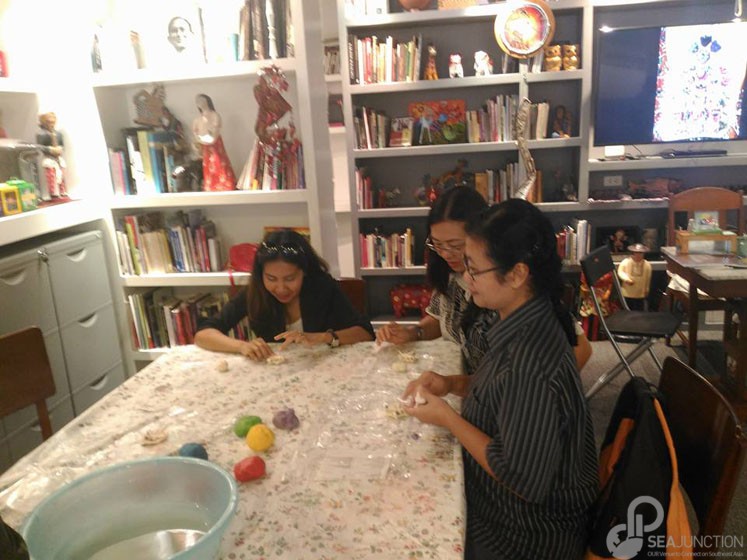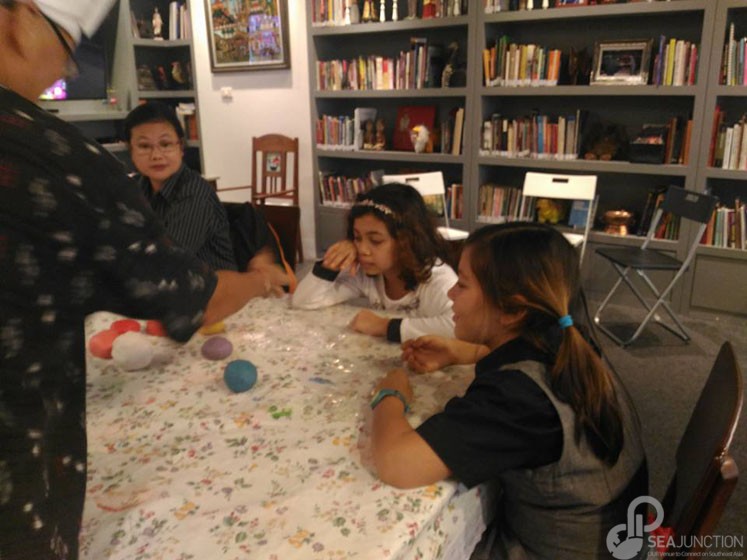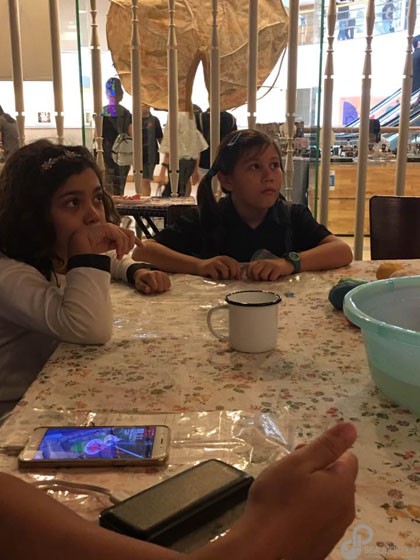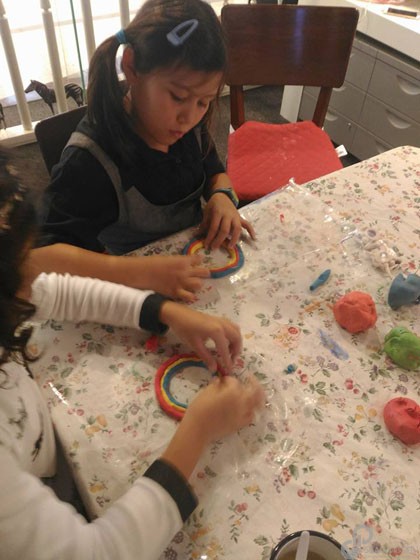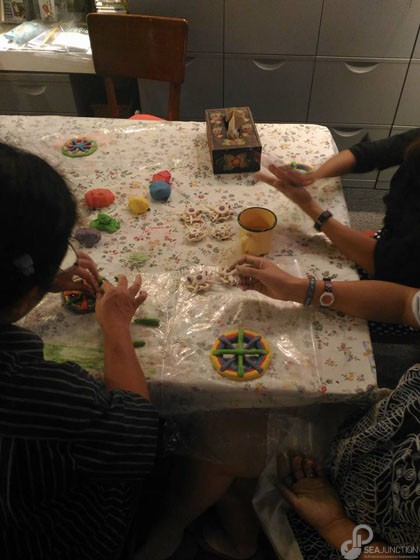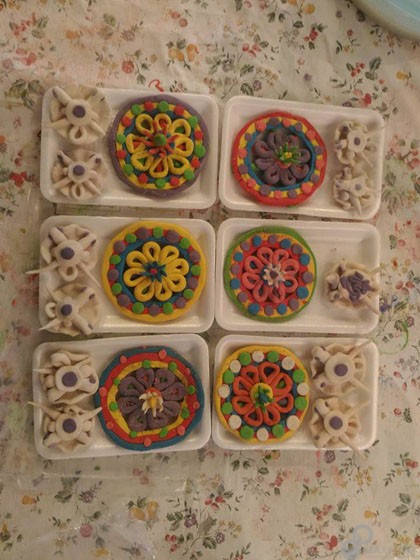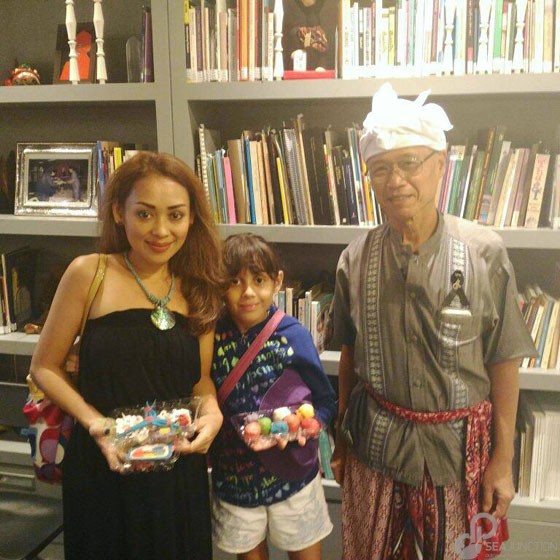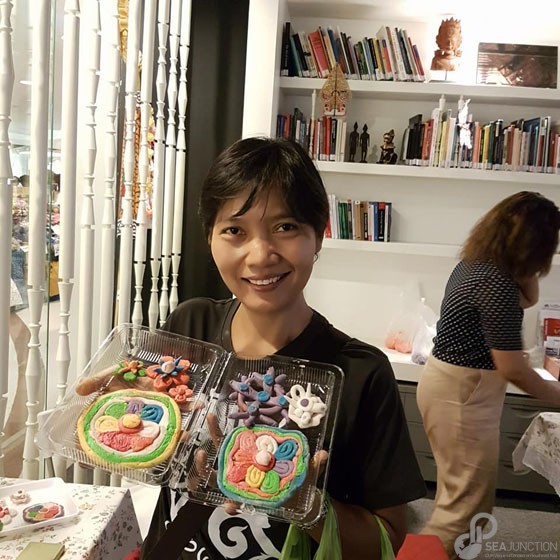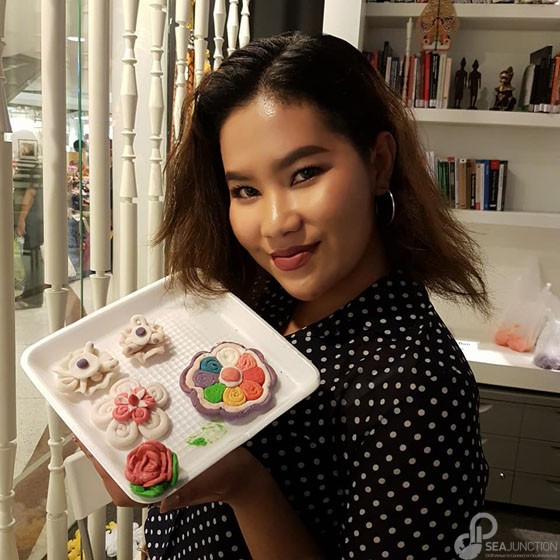Offerings on the island of Bali in Indonesia are an artistic tradition for Hindu-Buddhist religious events, rites of passage, ancestral worship, and animistic ceremonies. Palm leaves, flowers, fruits, rice, and meat are shaped and assembled into an enormous variety of symbolic forms, special colors, and specific amounts that are defined according to Balinese cosmology. There are many variations across the island, from village to town to city to region.
After the invisible spiritual essence of the offering is offered and consumed by the deities and spirits during the ritual, the physical leftovers can be eaten by humans. While daily offerings in Bali are usually done by women, for large ceremonies the men get involved by creating enormous offerings that represent the universe. Knowledge and skills are passed on to the younger generation through observation and active participation.
In this workshop, the basic concepts behind Balinese offerings and the cacalan or rice-dough offering figures were explained and participants learned to create them. The figures were made in different colors of rice-dough from a combination of rice and glutinous rice flours.
This event is the fourth of “The Rice of Southeast Asia” series, which was launched in May at SEA Junction with a talk on the “Origin of Tai Ancient Culture” by Tongham Natjummong, editor of Siam Rat newspaper, historian, and political commentator, followed by a talk in August by Jittima Pholsawek on rice biodiversity and rice folk tales in Thailand, and in September by a concert of Tarawangsa, rice harvesting music from West Java, Indonesia. The series is organized by SEA Junction in collaboration with Asiatopia International Performance Art and E-Shann Way Magazine and focuses on rice as a core element of Southeast Asian cultures. All dimensions of rice, from culture to science and agriculture are explored in a series of lectures, exhibitions and other events.



